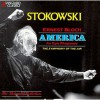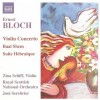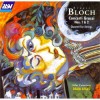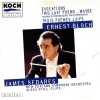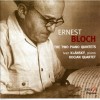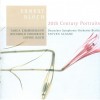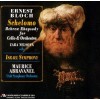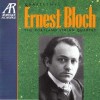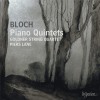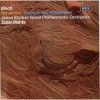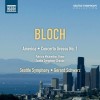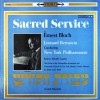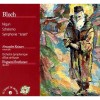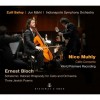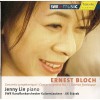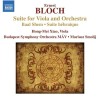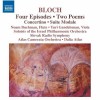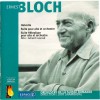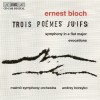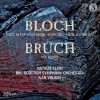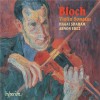Composers
Ernest Bloch
| Country: | Switzerland, United States Of America |
| Period: | XX age |
Ernest Bloch (July 24, 1880 – July 15, 1959) was a Swiss-born American composer.
Bloch was born in Geneva and began playing the violin at age 9. He began composing soon afterwards. He studied music at the conservatory in Brussels, where his teachers included the celebrated Belgian violinist Eugène Ysaÿe. He then travelled around Europe, moving to Germany (where he studied composition from 1900-1901 with Iwan Knorr at the Hoch Conservatory in Frankfurt), on to Paris in 1903 and back to Geneva before settling in the United States in 1916, taking American citizenship in 1924. He held several teaching appointments in the U.S., with George Antheil, Frederick Jacobi, Bernard Rogers, and Roger Sessions among his pupils. In December 1920 he was appointed the first Musical Director of the newly formed Cleveland Institute of Music, a post he held until 1925. Following this he was director of the San Francisco Conservatory of Music until 1930.
In 1941, Bloch moved to the small coastal community of Agate Beach, Oregon and lived there the rest of his life. He died in 1959 in Portland, Oregon, of cancer at the age of 78. The Bloch Memorial has been moved from near his house in Agate Beach to a more prominent location at the Newport Performing Arts Center in Newport, Oregon.
Bloch's early works, including his opera Macbeth (1910) show the influence of both the Germanic school of Richard Strauss and the impressionism of Claude Debussy. Mature works, including his best-known pieces, often draw on Jewish liturgical and folk music. These works include Schelomo (1916) for cello and orchestra, which he dedicated to the cellist Alexandre Barjansky (of Barjansky Stradivarius fame), the Israel Symphony (1916), Baal Shem for violin and piano (1923, later version for violin and orchestra), the "From Jewish Life" suite for cello and piano, and Avodath Hakodesh (Sacred Service, 1933) for baritone, choir and orchestra. Other pieces from this period include a violin concerto written for Joseph Szigeti and the rhapsody America for chorus and orchestra, which won a 1927 prize (sponsored by Musical America) for the best symphonic work on an American theme by an American composer. (Bloch qualified because he was a naturalized American citizen.)
Leopold Stokowski and the Symphony of the Air made the first stereo recording of America for Vanguard Records, which included a short speech by Bloch that explained why he wrote the piece; in June 1993, Gerard Schwarz and the Seattle Symphony Orchestra recorded the work for Delos.
Pieces written after World War II are a little more varied in style, though Bloch's essentially Romantic idiom remains. Some, such as the Suite hébraïque (1950) continue the Jewish theme; others, such as the second concerto grosso (1952), display an interest in neo-classicism (though here too the harmonic language is basically Romantic, even though the form is Baroque); and others, including the late string quartets, include elements of atonality.
Ernest Bloch and his wife Marguerite Schneider had three children: Ivan, Suzanne and Lucienne. Ivan, born in 1905, became an engineer with the Bonneville Power Administration in Portland, Oregon. Suzanne Bloch, born in 1907, was a musician particularly interested in Renaissance music who taught harpsichord, lute and composition at the Juilliard School in New York. Lucienne Bloch, born in 1909, worked as Diego Rivera's chief photographer on the Rockefeller Center mural project, became friends with Rivera's wife, the artist Frida Kahlo, and took some key photos of Kahlo and the only photographs of Rivera's mural (which was destroyed because Lenin was depicted in it).
Recently Added
| Country: | Switzerland, United States Of America |
| Period: | XX age |
Biography
Ernest Bloch (July 24, 1880 – July 15, 1959) was a Swiss-born American composer.
Bloch was born in Geneva and began playing the violin at age 9. He began composing soon afterwards. He studied music at the conservatory in Brussels, where his teachers included the celebrated Belgian violinist Eugène Ysaÿe. He then travelled around Europe, moving to Germany (where he studied composition from 1900-1901 with Iwan Knorr at the Hoch Conservatory in Frankfurt), on to Paris in 1903 and back to Geneva before settling in the United States in 1916, taking American citizenship in 1924. He held several teaching appointments in the U.S., with George Antheil, Frederick Jacobi, Bernard Rogers, and Roger Sessions among his pupils. In December 1920 he was appointed the first Musical Director of the newly formed Cleveland Institute of Music, a post he held until 1925. Following this he was director of the San Francisco Conservatory of Music until 1930.
In 1941, Bloch moved to the small coastal community of Agate Beach, Oregon and lived there the rest of his life. He died in 1959 in Portland, Oregon, of cancer at the age of 78. The Bloch Memorial has been moved from near his house in Agate Beach to a more prominent location at the Newport Performing Arts Center in Newport, Oregon.
Bloch's early works, including his opera Macbeth (1910) show the influence of both the Germanic school of Richard Strauss and the impressionism of Claude Debussy. Mature works, including his best-known pieces, often draw on Jewish liturgical and folk music. These works include Schelomo (1916) for cello and orchestra, which he dedicated to the cellist Alexandre Barjansky (of Barjansky Stradivarius fame), the Israel Symphony (1916), Baal Shem for violin and piano (1923, later version for violin and orchestra), the "From Jewish Life" suite for cello and piano, and Avodath Hakodesh (Sacred Service, 1933) for baritone, choir and orchestra. Other pieces from this period include a violin concerto written for Joseph Szigeti and the rhapsody America for chorus and orchestra, which won a 1927 prize (sponsored by Musical America) for the best symphonic work on an American theme by an American composer. (Bloch qualified because he was a naturalized American citizen.)
Leopold Stokowski and the Symphony of the Air made the first stereo recording of America for Vanguard Records, which included a short speech by Bloch that explained why he wrote the piece; in June 1993, Gerard Schwarz and the Seattle Symphony Orchestra recorded the work for Delos.
Pieces written after World War II are a little more varied in style, though Bloch's essentially Romantic idiom remains. Some, such as the Suite hébraïque (1950) continue the Jewish theme; others, such as the second concerto grosso (1952), display an interest in neo-classicism (though here too the harmonic language is basically Romantic, even though the form is Baroque); and others, including the late string quartets, include elements of atonality.
Ernest Bloch and his wife Marguerite Schneider had three children: Ivan, Suzanne and Lucienne. Ivan, born in 1905, became an engineer with the Bonneville Power Administration in Portland, Oregon. Suzanne Bloch, born in 1907, was a musician particularly interested in Renaissance music who taught harpsichord, lute and composition at the Juilliard School in New York. Lucienne Bloch, born in 1909, worked as Diego Rivera's chief photographer on the Rockefeller Center mural project, became friends with Rivera's wife, the artist Frida Kahlo, and took some key photos of Kahlo and the only photographs of Rivera's mural (which was destroyed because Lenin was depicted in it).
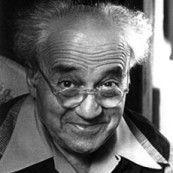
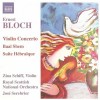
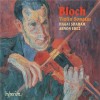
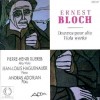
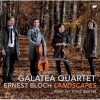
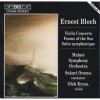
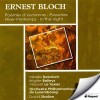
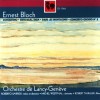
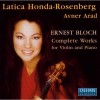
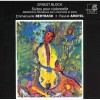
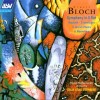
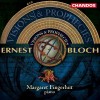
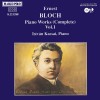


![Russian legends - Leonid Kogan [10 CD]](http://static.classicalm.com/repository/collection-cover/small/269-img1318707830156876.jpg)
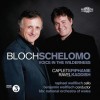
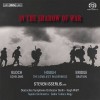
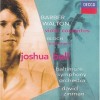
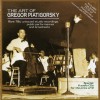
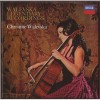
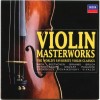
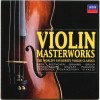
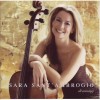
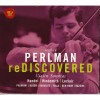
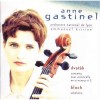
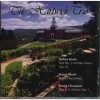
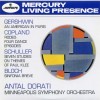
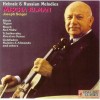
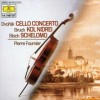
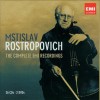
![The Heifetz Collection, Volume 8 [2 CD]](http://static.classicalm.com/repository/disk-cover/small/929-img1316982090166364.jpg)
![The Heifetz Collection, Volume 46 [2 CD]](http://static.classicalm.com/repository/disk-cover/small/1001-img1318023469472305.jpg)
